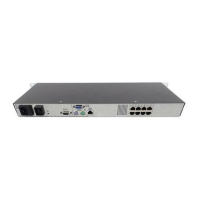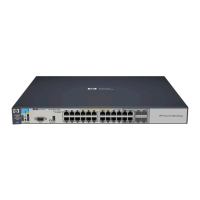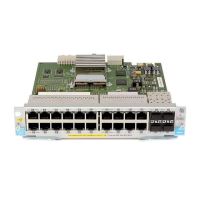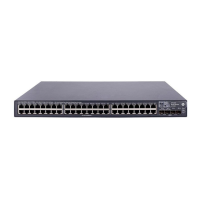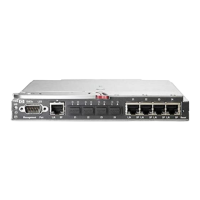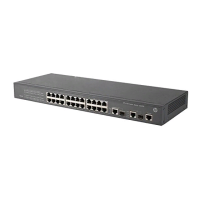
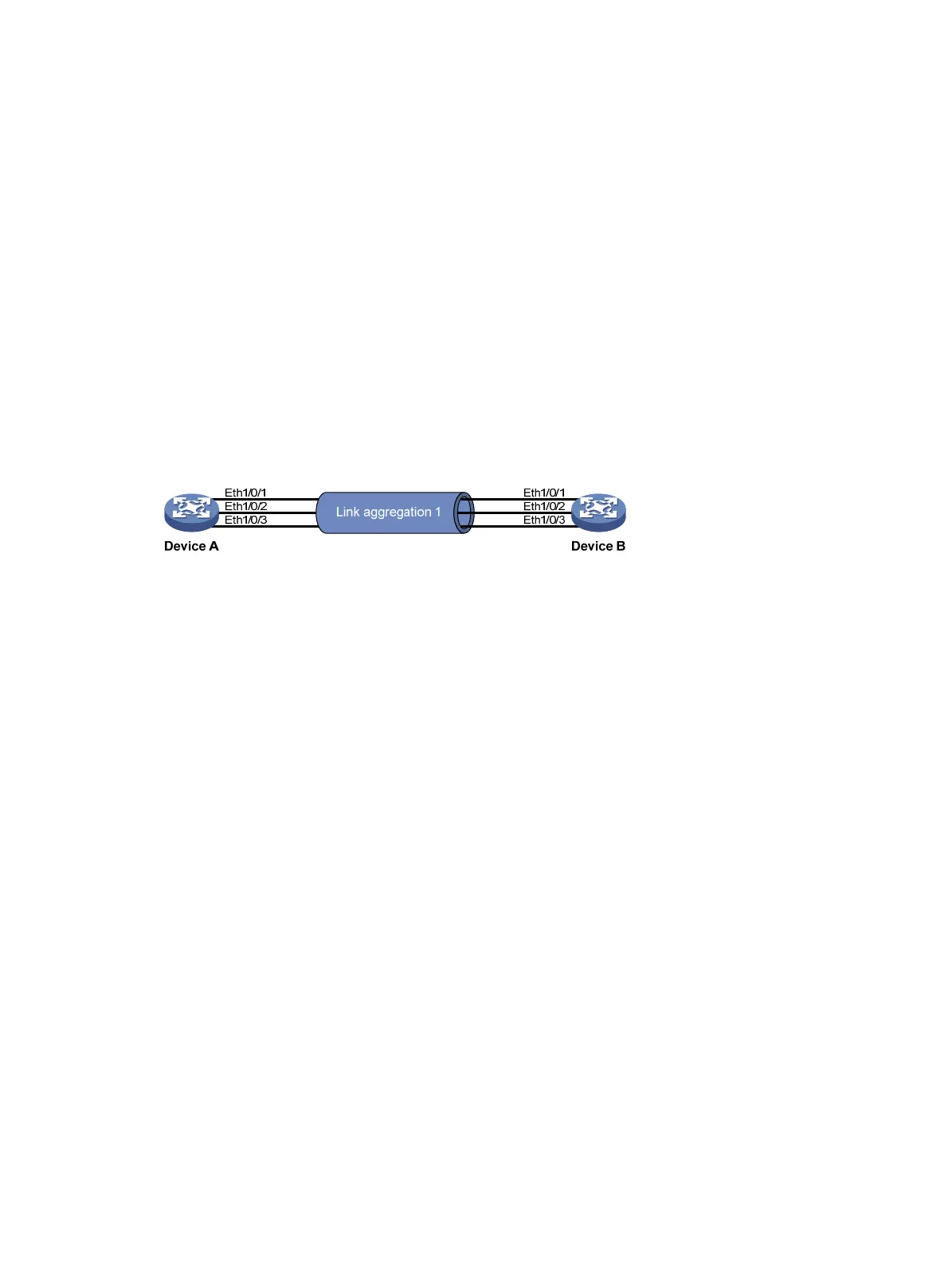
Do you have a question about the HP 3100 Series and is the answer not in the manual?
| Layer | Layer 2 |
|---|---|
| Jumbo Frame Support | Yes |
| Switching Capacity | 8.8 Gbps |
| MAC Address Table Size | 8000 entries |
| Management | Web interface, SNMP, CLI |
| Operating Temperature | 0 to 45°C (32 to 113°F) |
| Operating Humidity | 10% to 90% non-condensing |
| Dimensions | 44(H) x 440(W) x 173(D) mm |
Defines the naming format for HPE 3100 v2 EI Ethernet interfaces (A/B/C).
Explains how to configure logical interfaces comprising optical and electrical ports.
Details how to set duplex modes (auto, full, half) and port speed for Ethernet interfaces.
Provides instructions on how to shut down an Ethernet interface or a group of interfaces.
Explains how to narrow down speed options for auto-negotiation on Ethernet interfaces.
Guides on enabling flow control to prevent packet drops and manage traffic congestion.
Details how to enable loopback testing to identify Ethernet interface problems.
Explains how to enable support for processing frames larger than standard Ethernet frame size.
Describes how to assign multiple interfaces to a port group for bulk configuration.
Guides on setting thresholds for broadcast, multicast, or unicast traffic on interfaces.
Explains how to detect loops on an interface and configure protective actions.
Introduces the MAC address table for forwarding frames via unicast to reduce flooding.
Describes the different types of entries: static, dynamic, and blackhole.
Provides steps to manually add MAC address entries for security and port binding.
Explains how to disable MAC address learning to prevent table saturation.
Illustrates configuring static and blackhole MAC entries and setting aging timers.
Explains Ethernet link aggregation benefits like increased bandwidth and link reliability.
Defines aggregation groups, member ports, aggregate interfaces, and states.
Details static link aggregation where LACP is disabled and manual maintenance is required.
Explains dynamic link aggregation using LACP for automatic state maintenance.
Guides on configuring static or dynamic aggregation groups and aggregate interfaces.
Describes how to configure load sharing criteria based on MAC or IP addresses.
Provides examples for static and dynamic link aggregation configurations.
Introduces Spanning Tree Protocol (STP) for eliminating Layer 2 loops.
Explains Rapid Spanning Tree Protocol (RSTP) for faster network convergence.
Details Per-VLAN Spanning Tree (PVST) for improving link bandwidth usage.
Describes Multiple Spanning Tree Protocol (MSTP) overcoming STP/RSTP/PVST limitations.
Guides on configuring the device to operate in STP, RSTP, MSTP, or PVST modes.
Explains how to configure MST region name, VLAN-to-instance mappings, and revision level.
Details how to specify the current device as the root or secondary root bridge.
Explains how device priority affects spanning tree calculation and root bridge election.
Guides on enabling BPDU guard to protect against malicious BPDU attacks.
Provides a practical example for configuring MSTP with VLAN-to-MSTI mapping.
Introduces VLANs for segmenting LANs, reducing broadcasts, and improving security.
Explains VLAN tag fields and the IEEE 802.1Q standard for VLAN identification.
Covers VLAN implementation based on criteria like port, MAC address, or protocol.
Guides on creating VLANs, naming them, and configuring descriptions.
Explains how to group VLAN members by port and configure port link types.
Details assigning hosts to VLANs based on MAC addresses for secure network access.
Guides on assigning packets to VLANs based on protocol type and encapsulation format.
Provides commands to display VLAN information, interfaces, and statistics.
Explains voice VLAN configuration for prioritizing voice traffic and ensuring quality.
Describes identifying IP phones via OUI addresses or LLDP.
Details voice VLAN assignment modes (automatic/manual) and port configurations.
Compares security and normal modes for voice VLAN ports and their traffic handling.
Guides on configuring automatic voice VLAN assignment for PCs and IP phones.
Explains manual voice VLAN assignment for ports handling only IP phone traffic.
Describes using LLDP to automatically discover IP phones and configure voice VLANs.
Provides examples for automatic and manual voice VLAN configuration modes.
Introduces LLDP for exchanging device information between directly connected devices.
Covers LLDP frame formats, LLDPDUs, TLVs, and working mechanisms.
Details LLDP operational modes: TxRx, Tx, Rx, and Disable.
Lists tasks required for performing basic LLDP configuration and settings.
Guides on enabling LLDP globally and on specific ports.
Explains enabling CDP compatibility for Cisco IP phones to auto-configure voice VLANs.
Provides commands to display global LLDP information and neighbor details.
Illustrates basic LLDP configuration for monitoring network links.
Introduces Multiple Registration Protocol (MRP) and MVRP for VLAN configuration.
Explains how MRP participants register and deregister attribute values.
Details MRP messages: Join, New, Leave, and LeaveAll for attribute exchange.
Describes MVRP registration modes: Normal, Fixed, and Forbidden.
Guides on enabling MVRP globally and on specific trunk ports.
Explains how to configure MVRP registration modes (fixed, forbidden, normal).
Provides commands to display MVRP status, statistics, and VLAN information.
Illustrates MVRP configuration in normal registration mode between devices.


